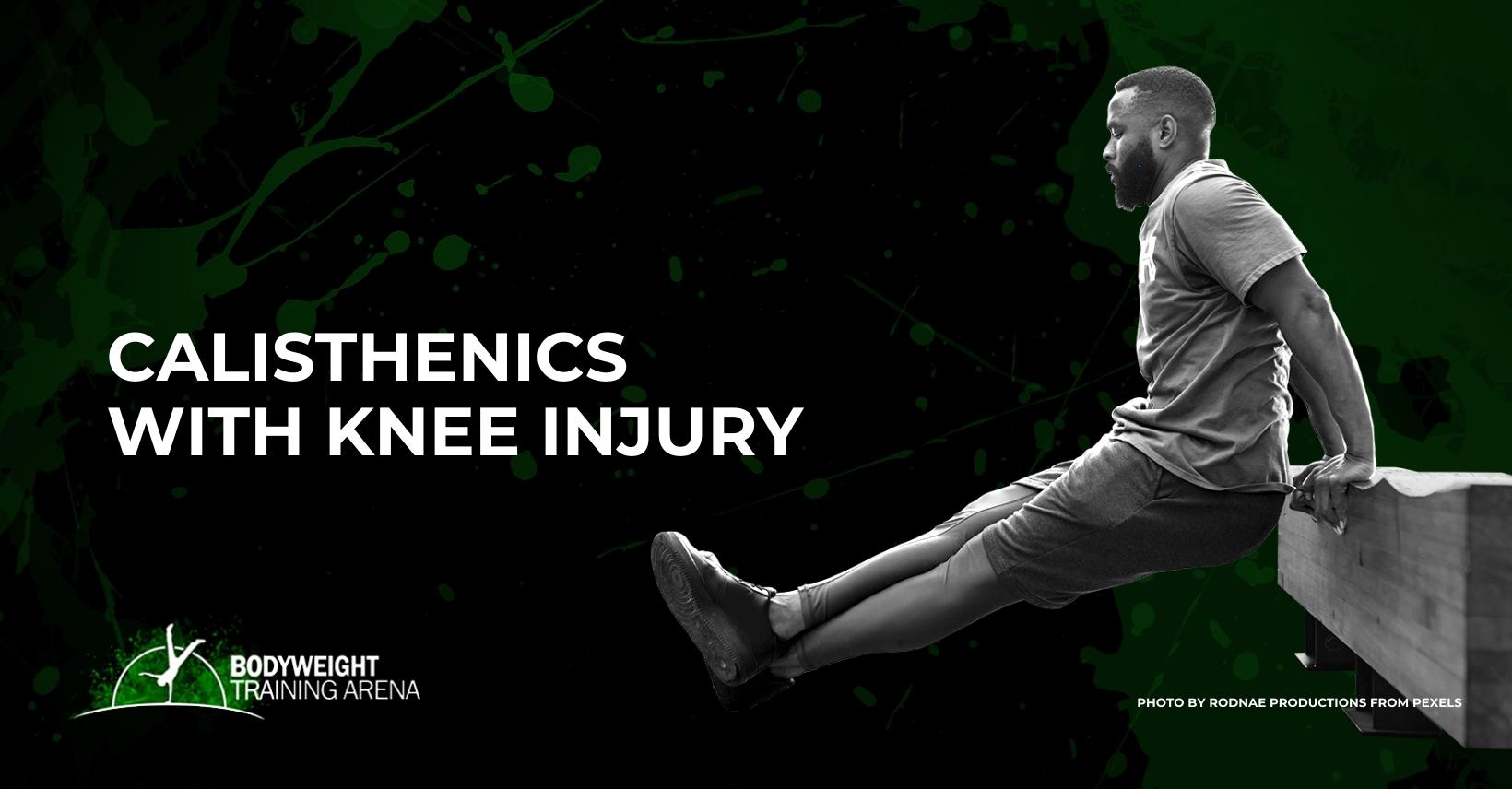Doing calisthenics does not require equipment and is highly reliant on bodyweight exercises. Now you’re wondering if it’s possible to do calisthenics with a knee injury. Let’s talk about everything you need to know before starting a calisthenics program with an injury.🤕
You can do calisthenics even with an injury as long as you’re careful and modify the exercises as needed. There are many calisthenics exercises you can do that don’t require jumping or squatting. For example, you can do push-ups, dips, pull-ups, and more.
Are calisthenics bad for your knees?🤒
No,😲calisthenics is not bad for your knees. In fact, they can actually help to strengthen the muscles and joints around your knees, which can help to prevent injuries.
However, if you have an existing knee injury or condition, it’s always best to check with your doctor before starting any new exercise regime.
Doing calisthenics with a knee injury is highly possible but it is important that you take some precautions and modify the exercises as needed. Always pay attention to your body and stop if you feel any pain or discomfort.🤛
✨Is it bad to do calisthenics with an injured knee?
It depends.🤔 If you have a minor sprain, then it’s probably okay to continue your normal routine with a few modifications. However, if you’ve injured your ligaments or meniscus, then you should probably take some time off and consult a doctor before starting any physical activity.
🎯In general, when it comes to exercising with an injury, it’s important to listen to your body and take things slowly. If something hurts, back off and try again later. Because pain is our body’s way of letting us know that we’re injuring ourselves, it’s usually better to be cautious.
💥What calisthenics exercise can I do with a knee injury?
The usual squats and lunges might be hard on sensitive and injured knees. The good thing is that there are several calisthenics exercises you can do that don’t require jumping or squatting.
For example, you can do push-ups, dips, pull-ups, and more. You might also want to try a few exercises that are specifically designed for rehabbing the knee such as:
✅The wall sit
This exercise is great for strengthening the quadriceps muscles. To do the wall sit, stand with your back against a wall and slide down into a sitting position. Make sure that your knees are bent at a 90-degree angle and hold this position for as long as you can.
✅The glute bridge
This exercise is great for strengthening the glutes and hamstrings. To do the glute bridge, lie flat on your back with your feet flat on the ground and your knees bent. Lift your hips off the ground until your thighs and torso are in line with each other and hold this position for as long as you can.
✅The calf raise
This exercise is great for strengthening the calves. To do the calf raise, stand with your feet hip-width apart and rise up onto your toes, then slowly lower your heels back to the ground. Repeat this exercise for as many reps as you can.
🔥What calisthenics can you do with resistance bands for your knees?
Resistance bands are a popular tool for working out with injuries because they provide adjustable levels of resistance.
This makes them a great option for people who are just starting to work out again after an injury. Some popular calisthenics workouts that can be done with resistance bands include:
☑️Terminal knee extension
To do the terminal knee extension, loop a band around a sturdy object and tie it around the back of your knee. Step backward to create tension in the band, then extend your leg forward. Return to the starting position and repeat for as many reps as you can.
☑️Lying knee extension
Begin by interlacing your ankle with a resistance band and wrapping it around your knee. Start by extending your leg until it’s completely extended, then return to the beginning. It should resemble a hamstrings curl motion.
☑️Lying glute extension
To do the lying glute extension, Use a resistance band to pull your left leg as far over your right as possible. Tight glutes cause tight hamstrings. Hold for a two count then return the leg to the starting position. Repeat on the opposite side.
☑️Stork stance TKE
This is a harder version of the terminal knee extension. Set up how you would for the standard TKE, but this time attempt the activity with 1 foot on the ground.
How do you strengthen your knees🦵 with calisthenics?
Put your knee down and tighten the front of your thigh. You can also perform a straight leg raise, which is laying on your back with your working leg straight and lifting it to the sky.
Hold for a few seconds then slowly lower the leg back to the ground. You can also do this with a resistance band around your ankles.
☝️What exercises should I avoid with knee pain?
Some calisthenics exercises may aggravate your knee pain, so it is important to avoid these exercises until your pain subsides.
Avoid deep squats, lunges, and positions that put a lot of stress on your knees (e.g. kneeling). You can still do other exercises that focus on the muscles around your knee as wall sits, bridges, or hamstring curls.
How long after a knee injury can I exercise?🥺
It depends on the type of injury. If you’ve suffered a minor sprain, then you should be able to resume exercise after a few days. However, if you’ve ruptured your anterior cruciate ligament (ACL), then you’ll need to wait several months before starting to exercise again.
🤜It’s always best to check with your doctor or physical therapist before starting any new exercise routine, especially if you’re recovering from an injury.
For minor knee pain, as soon as the swelling subsides, you can begin exercise rehabilitation usually after a few days. Don’t forget to do warm-up and cool-down exercises.
What exercises can I do to help with knee pain?😢
Don’t forget to do your warmup each time you work out!
There are many different exercises that you can do to help with knee pain. Here are a few examples:
- ✔️Straight leg raises – this is a simple strengthening exercise that can be done lying down or standing up.
- ✔️Hamstring curls – these thigh muscles are important for stabilizing the knee joint. Start from a seated position with your legs outstretched in front of you, then curl your legs up towards your butt.
- ✔️Calf raises – these exercises help to strengthen the muscles and tendons around the ankle, which can help to support the knee joint.
- ✔️Side leg raises – this exercise helps to target the muscles on the outside of your leg, which can help to improve stability and prevent knee injuries.
- These are just a few examples, so be sure to consult a personal trainer or physical therapist for a more comprehensive list of exercises that are safe for you to do.
🏆Benefits of right calisthenics exercise for the knees and joints
With the right calisthenics exercises, you can improve your knee joint stability and strength, which can help to prevent injuries. You can also improve your range of motion and flexibility, which can help you to move more easily and with less pain. Exercising regularly can also help to keep your joints healthy and lubricated.
📌Final Thoughts
If you’re suffering from knee pain, don’t worry – there are plenty of exercises that you can do to help. be sure to consult with a personal trainer or physical therapist to get a comprehensive list of exercises that are safe for you. Remember, always warm-up and cool down before and after your workouts.
There are several levels of calisthenics exercises. You may need to start with the easier exercises and work your way up as you get stronger. And, always consult with a doctor before starting any new exercise routine.





